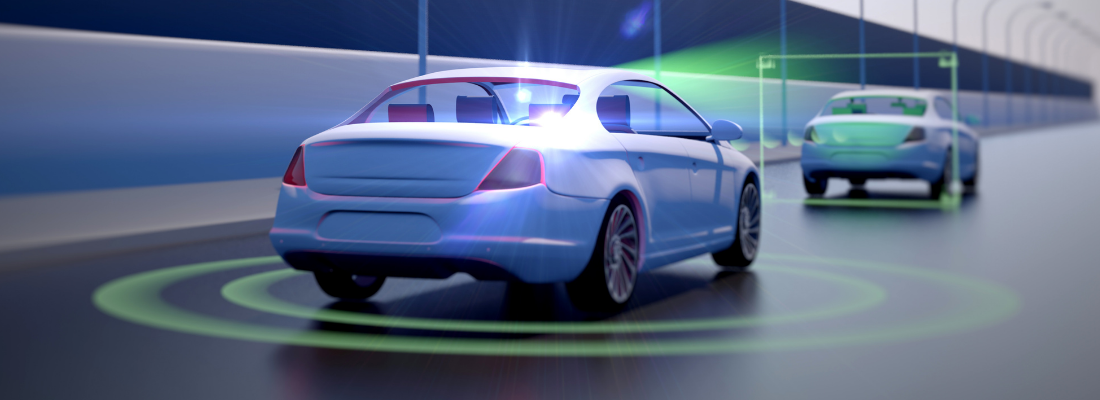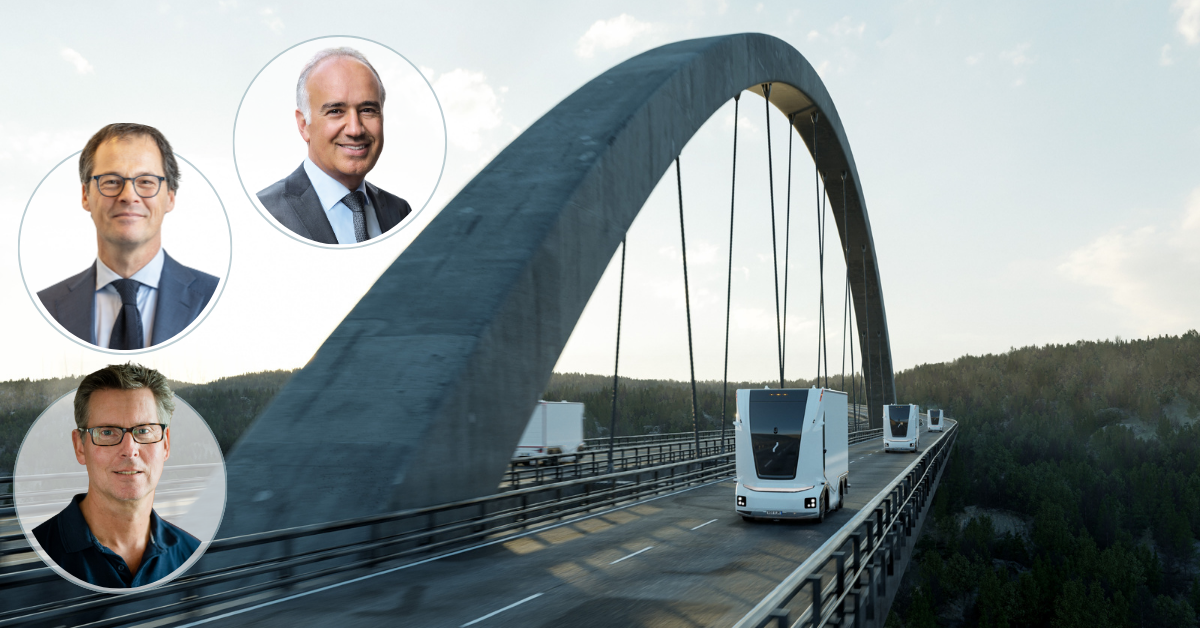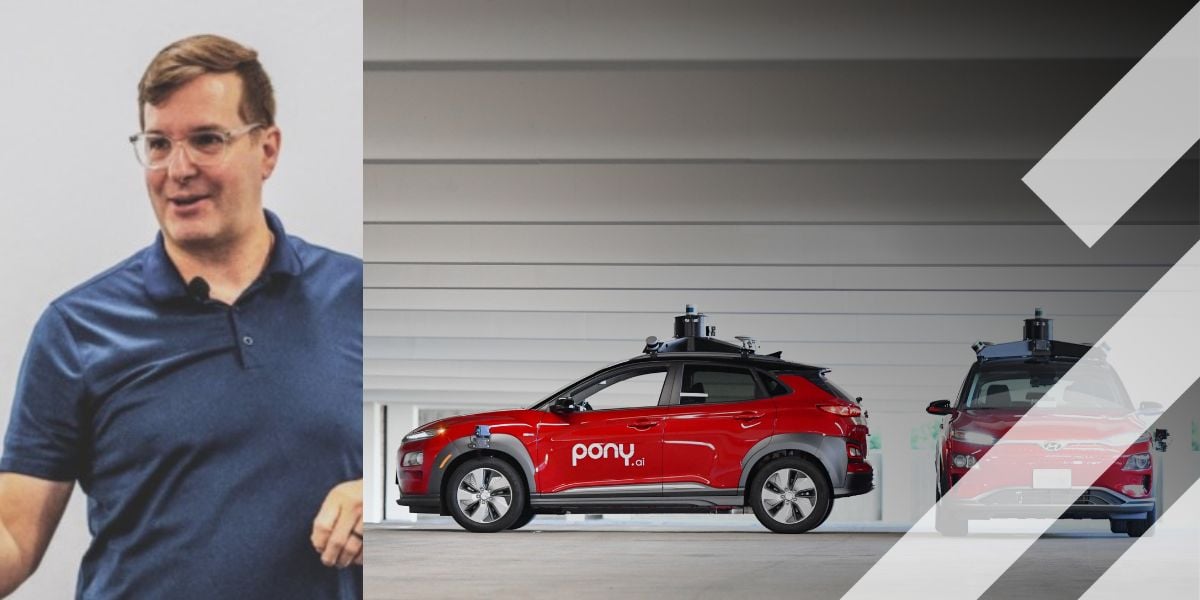Latest Developments Cooperative Connected and Automated Mobility
It’s a debate that has been raging for the best part of two decades – when will autonomous vehicles be a commonplace sight on our roads? In the year 2021 we asked that question to several experts in the field. Find the three most important developments summed up in this article.
Three developments automated driving 2021
Cooperative Connected and Automated Mobility in the European Commission’s Smart Mobility Strategy
During Intertraffic ON AIR 6, Tom Alkim from the European Commission’s DG Research & Innovation, discussed the Commission’s Sustainable and Smart Mobility Strategy. ‘The document highlights that “connected and automated systems have enormous potential to fundamentally improve the functionality of the whole transport system,’ says Alkim, ‘and contribute to our sustainability and safety goals.’
‘CCAM will bring down the number of road fatalities and accidents, help to reduce harmful emissions from transport by smoothing traffic flow and avoided unnecessary trips, and make transport more accessible to ensure universally inclusive mobility.’
Watch the full ON AIR episode here >
1.Road safety
Nick Reed to refers to the death of the first pedestrian to be killed by an autonomous vehicle, in Phoenix, Arizona, in March 2018. ‘The car had detected the presence of a person, but it didn't know how to respond. The safety driver was there to help manage that situation. But they were being distracted by their smartphone. Even in that situation where you had a professional safety driver involved there’s a misunderstanding of the capability of the vehicle because it had done the right thing so many times before, they weren't expecting to see a pedestrian at that point. And suddenly there is one right upon you when you should have been paying attention…and very sadly the worst happens.’
Nick Reed: ‘What got me into the field was safety,’ he replies instantly. ‘I've done years of work at TRL on driver behaviour, the effects of our phones, the effects of drugs, alcohol, fatigue, and I always felt I was the one saying you don't want to do that you want to do this. And when I thought about automated driving it felt a more positive way to tackle the issue. This would enable safer road use and free up time for other productive or social uses. That was why I started working on automated driving, it's the sense that it would tackle some of those contributors to road crashes that humans are sadly susceptible to.’
Serge Lambermont, the Dutch-born, South African-based owner of Singaporean AV consultancy Autobotik concluded an interview with a notion that is undoubtedly shared by the entire autonomous vehicle, and human-driven vehicle sector. ‘Now you can really use real-world, technical knowledge about what is dangerous in order to make the world safe.’
2.Education and information
The wider audience is the key target market for anyone launching pretty much anything, be it a soft drink, a shoe or the concept of the driverless car. Public perception is paramount but it all hangs on how the message regarding its usefulness is conveyed. ‘I must have one of those’ is the end goal. Do autonomous vehicles need the same kind of marketing push? Where is the “you must have one” campaign going to spring from and how, as an industry, can the notion that driverless cars are not safe be put to bed once and for all?
‘People will need to be reassured that they're safe, especially when you are effectively taking control away from the human operator,’ agrees Reed. ‘I saw some statistics where something like eight out of 10 people think they're above average drivers. But my experience of trialing these vehicles is that people become comfortable with it very quickly. If it means that they can get on and do other things and watch Netflix or chat to their friends, or have their dinner or do their makeup or whatever then I think people will become comfortable with it.’
It all comes down to education and user experience. Like George de Boer of TomTom pointed out: ‘So, my mother in law, can she handle a self-driving car? Does she understand all the bells and whistles on her dashboard to take over in a safe manner?’
According Vantomme it’s about user trust and acceptance. ‘The public, the drivers, need to be sure that they are happy to be driven autonomously everywhere. We need early adopters. 20 years ago there were no smartphones but now most of us cannot live without them. A good example is autonomous shuttles in shopping malls and airports. People trust them. It was a case of seeing is believing with electric vehicles at first and now we need millions of charging stations in Europe in order to make it happen for home and office charging. If AVs can follow the example of electric vehicles and become an everyday sight on our roads then maybe the search for perfection might have been a fruitful one after all.’
Peter Morsink adds: ‘We’re in a very interesting period now. Mixed traffic is happening now, but by gradually introducing these smart functions into our vehicles, raising awareness, making it part of testing and training, it’s possible to tackle that issue and make it less of a leap. Drivers need to be aware that if they are in an automated car that it may behave differently from other cars on the road. I think we need to pay attention to that. My car has automatic cruise control and might close the gap to the car in front a lot more slowly than a human driver might, for example. Another car might try to cut in front of me if the driver sees the gap.’
3.Interaction with the entire transport system
Tom Alkim believes that for CAVs to become a commonplace sight on our highways and byways, connected and autonomous vehicles will have to be integrated into the broader transport systems and interact with other forms of mobility. Connectivity is key.
V2V, V2I, V2X
According to TomTom’s George de Boer it’s not just sending information to the car but also getting information from connected vehicles via 600 million data points. For example, broken down vehicle information is updated into the cloud within 5 seconds to make it safer for everyone.
Joost Vantomme (ACEA): ‘First, you need the vehicles to be automated and autonomous in the future and of course you need the whole regulatory system and policy on Type Approval. The UK has done a good job on that front. The vehicle as an instrument - as a product - should be approved to do that. But it's not only about vehicles, it's about the roads, you need to drive on the roads. CEDR (Conference of European Directors of Roads) are in discussions with us about the road infrastructure. Do they have to have better road markings, lane markings, speed limit signs, better communication between the vehicle and the roadside (V2I). Traffic signals will have to interact with cars so that our autonomous vehicles in the future will have a kind of cloud system or Artificial Intelligence built into the HD maps. We need those sensors to collect data so we can create maps of the cities and the maps of the road fatalities. That would be ideal, of course, so that we can interpret the data in real time.’
George de Boer (TomTom): 'When cars understand the curvature and gradient, they're able to plan the most efficient route. Seeing what’s coming also makes it possible to merge at just the right time, improving fuel efficiency.'
Multiple stakeholders
It is not only about connecting vehicles to vehicles or vehicles to the road; as Peter Morsink of Royal HaskoningDHV mentions it is about connecting multiple stakeholders. ‘Connecting multiple stakeholders to ensure safe and effective use of smart vehicles and collaborating to further accelerate the impact and introduction of smart vehicles are also crucial to the future deployment of CCAM. Of persistent interest to the transport press and motorists alike is how our transport network will cope with the eventual mix of driverless vehicles with human-driven machines.’
Share your story
Do you have an innovation, research results or an other interesting topic you would like to share with the professionals in the infrastructure, traffic management, safety, smart mobility and parking industry? The Intertraffic website and social media channels are a great platform to showcase your stories!
Please contact our Sr Brand Marketing Manager Carola Jansen-Young.
Are you an Intertraffic exhibitor?
Make sure you add your latest press releases to your Company Profile in the Exhibitor Portal for free exposure.
Get up to speed on the mobility industry - our newsletter straight to your inbox!








